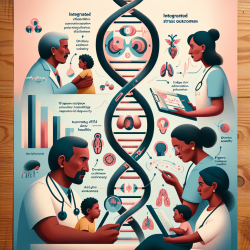Introduction
Classic Galactosemia (CG) is a genetic disorder resulting from mutations in the GALT gene, leading to the deficiency of the enzyme galactose-1 phosphate uridylyltransferase. This deficiency causes an accumulation of toxic metabolites, which can lead to severe complications, including primary ovarian insufficiency (POI) in females. Despite dietary restrictions, these complications persist, highlighting the need for a deeper understanding of the underlying mechanisms.
Research Insights
A recent study titled "Early postnatal alterations in follicular stress response and survival in a mouse model of Classic Galactosemia" sheds light on the pathophysiology of POI in CG. The research utilizes a GalT gene-trapped mouse model to explore the Integrated Stress Response (ISR) pathway's role in follicular development and stress response.
The study reveals that alterations in the ISR pathway contribute to the accelerated activation of primordial follicles, leading to increased cellular stress and follicular burnout. These findings suggest that the ISR's dysregulation plays a critical role in the early onset of POI in CG.
Implications for Practitioners
For practitioners, these findings emphasize the importance of early intervention and monitoring in children with CG. By understanding the mechanisms of follicular stress and ISR alterations, practitioners can better anticipate and address the potential complications associated with CG.
- Early Monitoring: Regular assessments of ovarian function and stress markers in young females with CG can help identify early signs of POI.
- Interdisciplinary Approach: Collaboration with geneticists, endocrinologists, and nutritionists can provide a comprehensive care plan for affected individuals.
- Research and Development: Encouraging further research into therapeutic interventions that target the ISR pathway may offer new avenues for mitigating POI in CG.
Encouraging Further Research
The study's findings open the door to new research opportunities. Practitioners are encouraged to explore the following areas:
- Therapeutic Interventions: Investigating potential treatments that modulate the ISR pathway to preserve ovarian function in CG.
- Longitudinal Studies: Conducting long-term studies to track the progression of POI and the effectiveness of early interventions.
- Biomarker Development: Identifying reliable biomarkers for early detection of ISR dysregulation and follicular stress in CG.
Conclusion
By integrating these research insights into practice, speech-language pathologists and other healthcare providers can enhance their ability to support children with CG. This approach not only improves individual outcomes but also contributes to the broader understanding of CG and its complications.
To read the original research paper, please follow this link: Early postnatal alterations in follicular stress response and survival in a mouse model of Classic Galactosemia.










